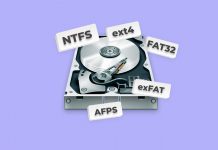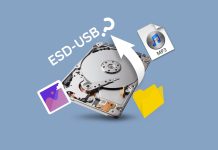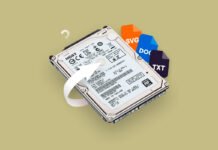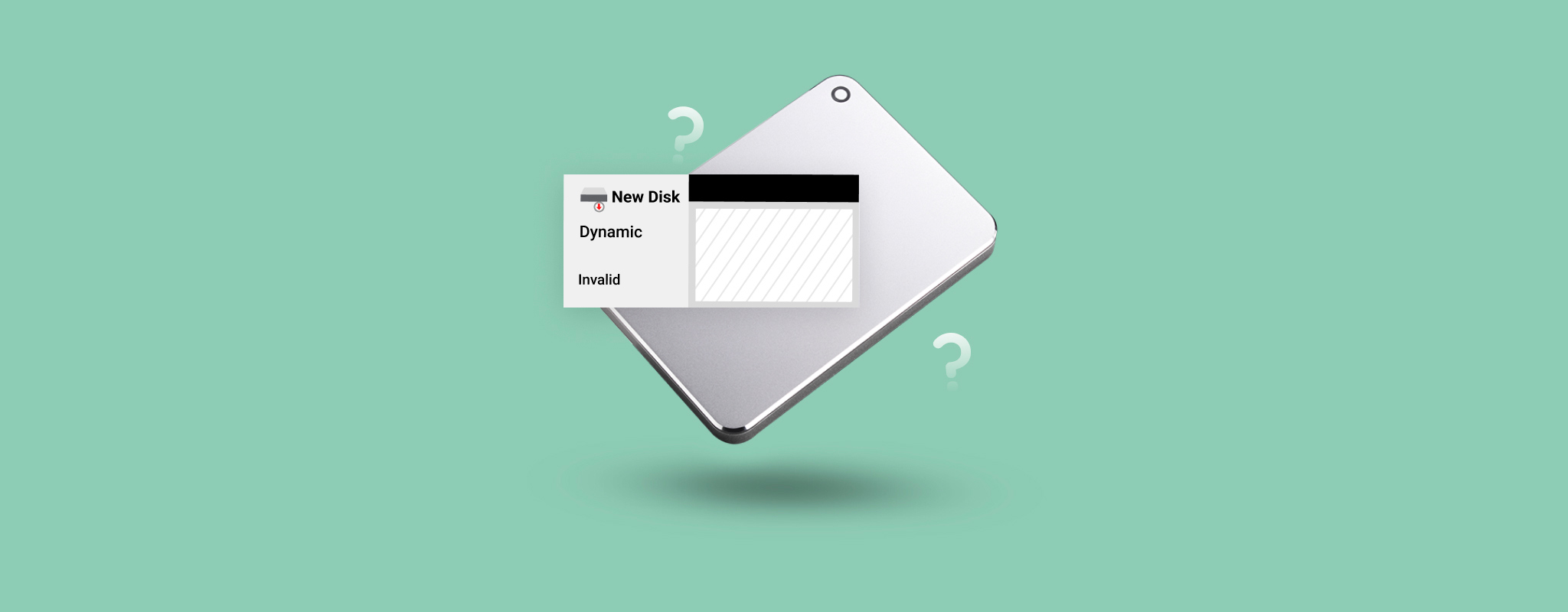 If one of your hard drives is affected by an error, you may notice that it is no longer visible or accessible. If you check Disk Management, it may appear that Disk 1 says Unknown and Not Initialized.
If one of your hard drives is affected by an error, you may notice that it is no longer visible or accessible. If you check Disk Management, it may appear that Disk 1 says Unknown and Not Initialized.
As with many other Windows errors, there are many possible reasons why this could have occurred. We’re going to explain what this error means, how to fix it, and how to recover any data that you may have lost.
Why Disk 1 is Not Initialized
When looking at your disks in Disk Management, Disk 0 will always be your system disk, and Disk 1 and above are secondary disks used for storage. In some cases, you may find that Disk 1 is Unknown and Not Initialized with 0 bytes. If one or more disks are displayed as unknown and not initialized, it could be caused by one of the following problems:
| Problem | Description |
| ✨ Disk is new | Brand-new disks may not be initialized straight out of the packaging. In such cases, you simply need to initialize and format the disk to begin using it. |
| 🔗 Unstable connection | An unstable connection caused by a faulty cable or blocked port will sometimes cause your disk to be read as uninitialized. It’s also a culprit behind the cyclic redundancy check error that external drives are prone to. |
| 🔧 Driver issues | Drivers are an interface between your hardware and operating system. Working drivers are necessary to use your hard drives, so if they’re missing or corrupted, this error can occur. |
| 🗃️ Corrupted file system | A file system is responsible for organizing your data and allowing your operating system to find and access it. Without it, Windows will not know how to access anything on it and may prompt this error in response. |
| ❌ Corrupted MBR | The MBR is a necessary component in the boot process for Windows and typically sits at the beginning of your disk. It also houses your partition table, so if it has been corrupted then Windows may not be able to read some disks as a result. |
| 🔍 Missing or lost partition table | Your partition table holds the structure of your disk, which includes information on where your partitions are located. If it has been compromised, Windows will not know how to read the disk properly. |
| 🤒 Bad sectors | Bad sectors are sectors on your disk that are no longer usable. If a sector that holds important system or disk information has gone bad, it could cause your disk to show as not initialized. |
| 💥 Physical damage | As with most electronics, your hard drive is susceptible to physical damage. If a hardware component, like the read/write head or drive motor, has failed, then the disk may not be readable. |
If you’ve been able to pinpoint what has caused this issue, don’t jump straight into fixing it yet. Your data is in a vulnerable state right now, and any fix you implement may cause it to be overwritten. Next, we’ll show you how to recover data from the uninitialized drive first.
How to Recover Data from an Uninitialized Drive
When you initialize a disk, formatting is part of that process. Because of this, we highly recommend that you recover your data now rather than later, as there’s no guarantee that you’ll be able to recover the files that are deleted by the format once it’s complete.
For this task, we suggest Disk Drill. This data recovery tool is available on Windows 10 and 11 (as well as older versions of Windows with Disk Drill 4), and it’s our go-to suggestion because it’s fast, easy to use, and effective. However, you can only recover your data if the disk is both visible in Disk Management and displaying the correct storage capacity. If it’s not, you should consult a data recovery service instead.
When your drive is in a vulnerable state, we recommend that you make a byte-to-byte backup of it first. This ensures that you have a full copy of your data if something were to go wrong.
Follow these steps to recover data from an uninitialized drive:
- Download and install Disk Drill to a healthy drive.
- Connect the uninitialized disk to the computer (if it isn’t already) and select it from the list of devices. Then, click Search for lost data.
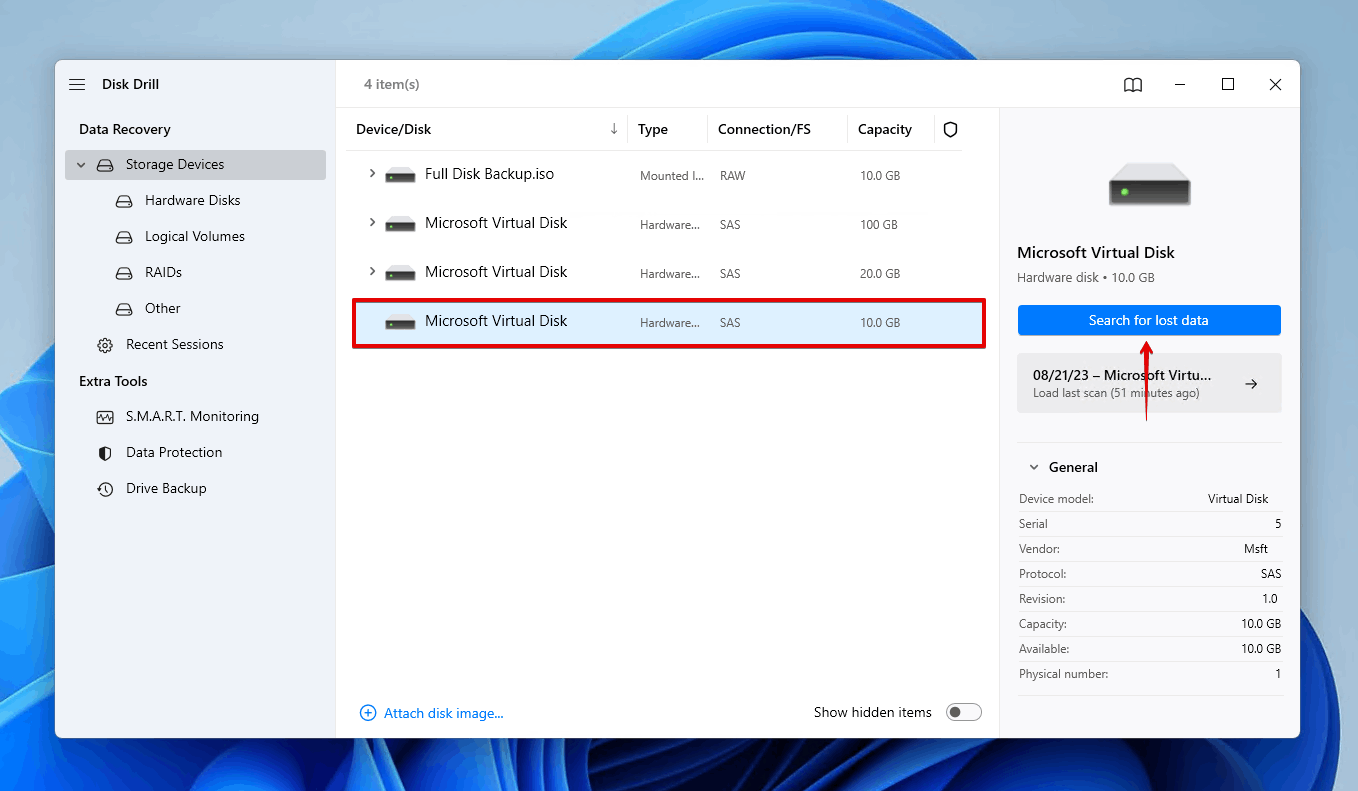
- Click Review found items, or click Recover all to recover everything that Disk Drill has found.
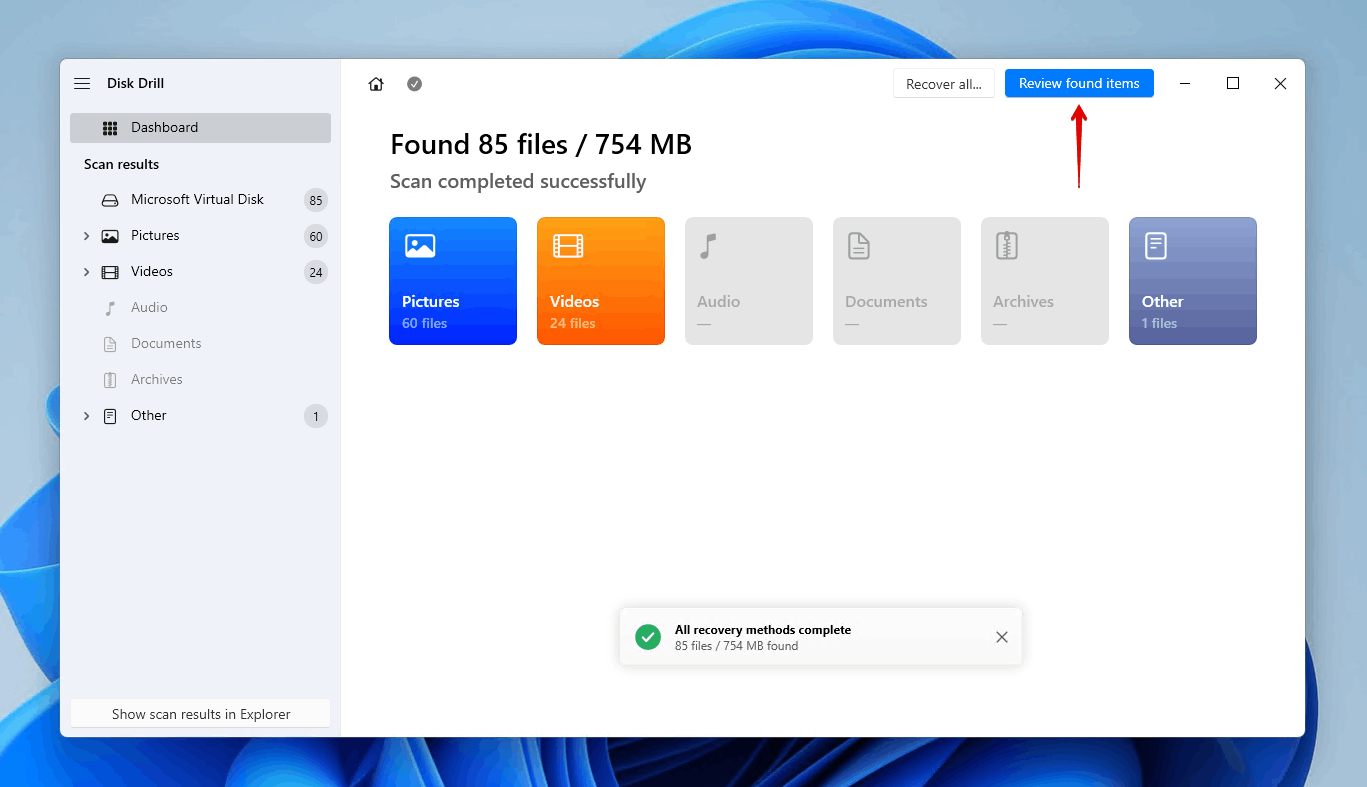
- Select the files you want to recover. Your data may be split across the different dropdowns depending on each file’s state. You can also use the filters and search function to better manage the results. When ready, click Recover.
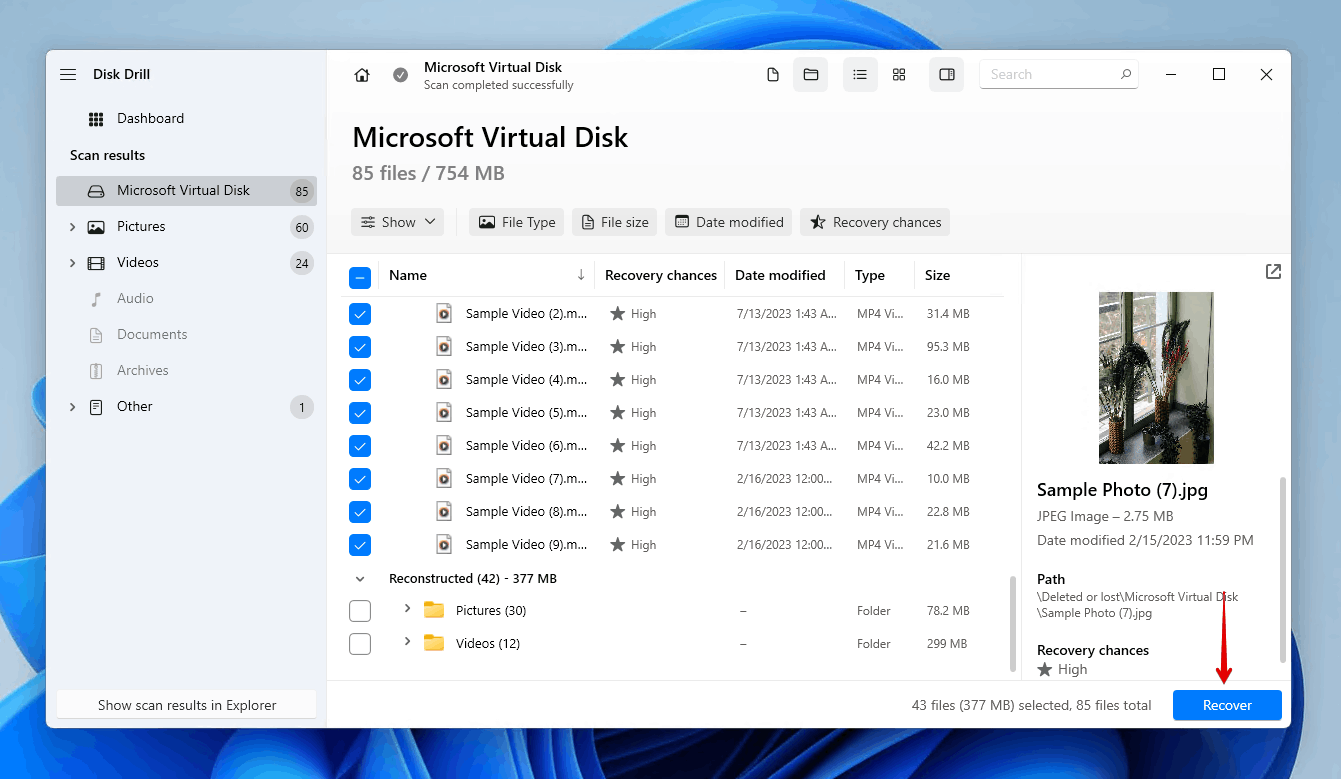
- Choose a safe recovery location on a separate storage device, then click Next.
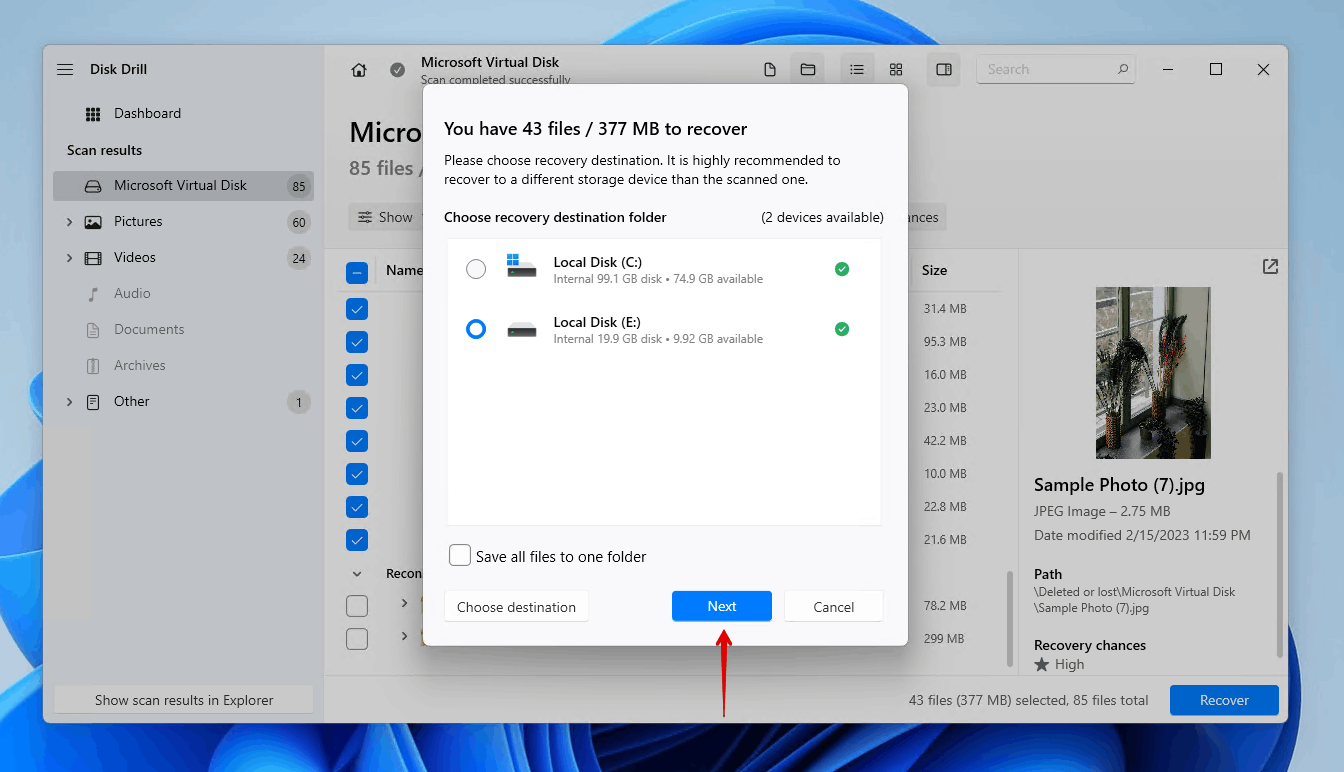
How to Fix Error When Drive is Showing in Disk Management
If the drive is showing in Disk Management, it means that it’s unlikely to be an issue with the connection or BIOS configuration.
These are some ways to fix the ‘Disk 1 Unknown, Not Initialized’ error on Windows:
Method 1: Update Drivers
If the disk is unknown, not initizialized, and no size is showing, corrupted or missing drivers could be the problem here.
Follow these instructions to update or reinstall your drivers:
- Right-click Start and click Device Manager.
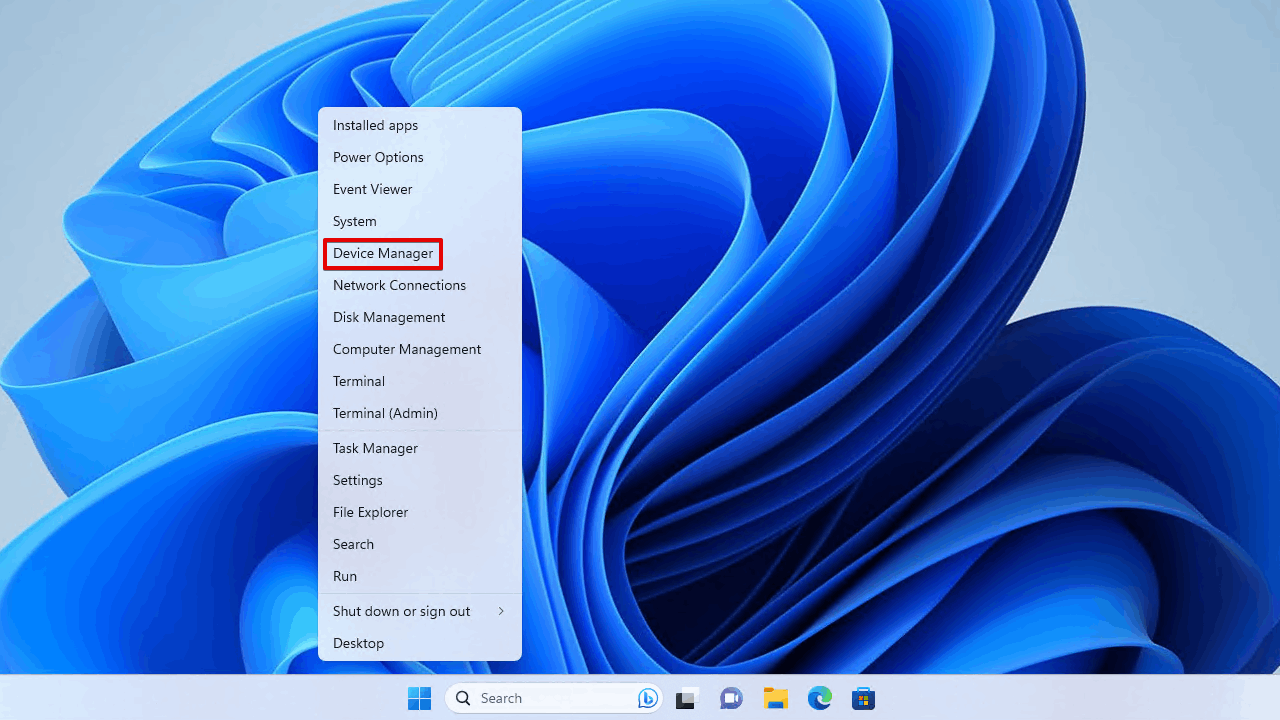
- Expand Disk drives, then right-click the problematic drive and click Update driver.
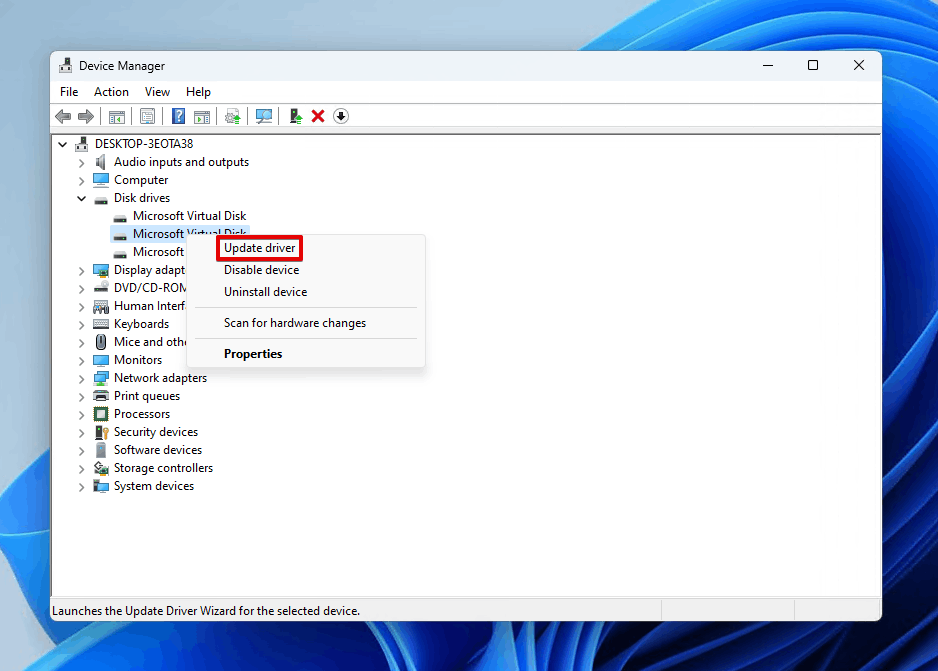
- Click Search automatically for drivers, or you can manually select them if you’ve already downloaded them. If this doesn’t work, move to the next step.
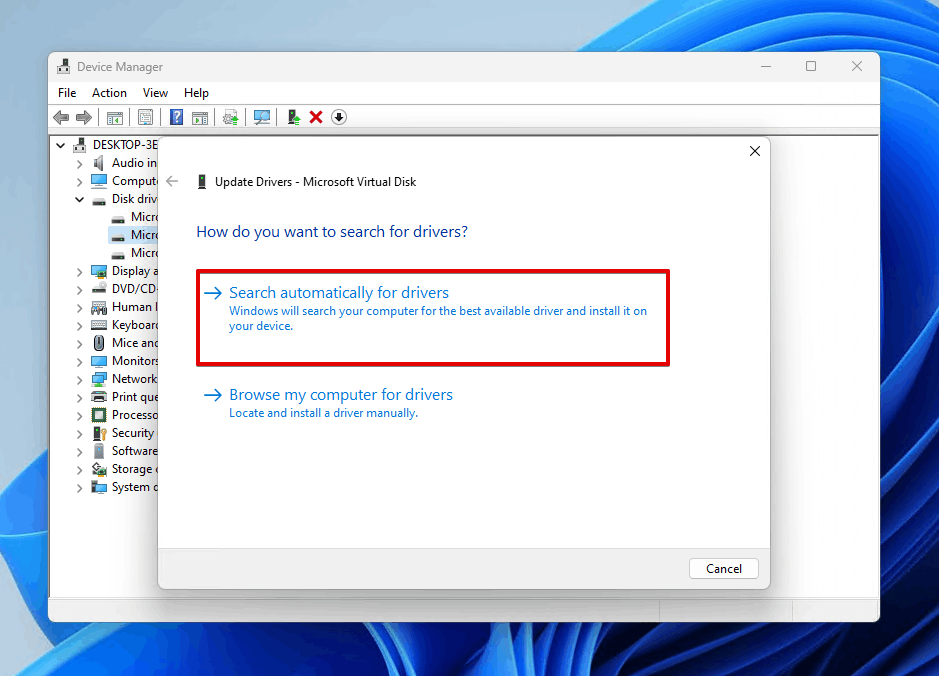
- Right-click the problematic drive again, but this time click Uninstall device.
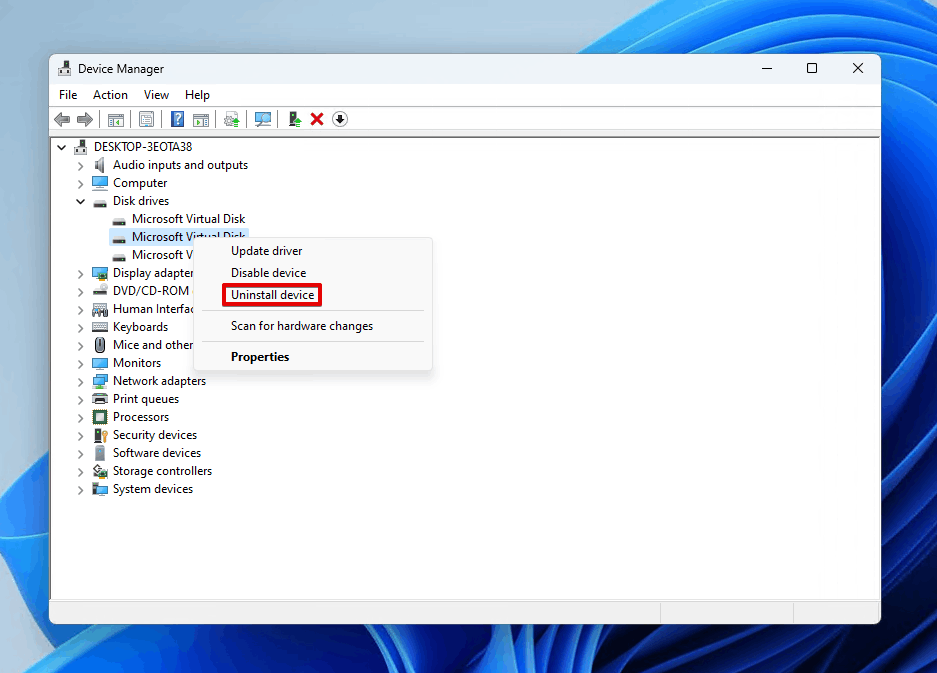
- Click Uninstall to confirm the action.
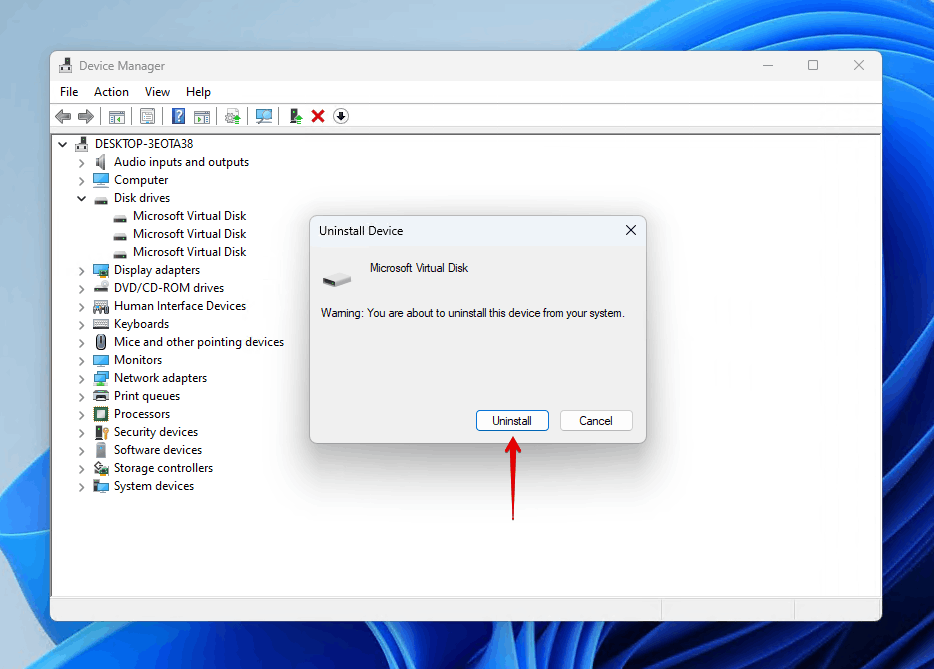
Restart your computer after the driver has been uninstalled to force it to reinstall a healthy copy. If that didn’t work, try the next method.
Method 2: Fix MBR
If your MBR has been damaged or corrupted, Windows has a useful command called bootrec that you can use to fix it. This must be run from Windows Recovery Environment (WinRE), so either reboot with Advanced startup or use your Windows installation media.
Here’s how you can fix MBR using Command Prompt from WinRE:
- Boot into WinRE and click Troubleshoot.
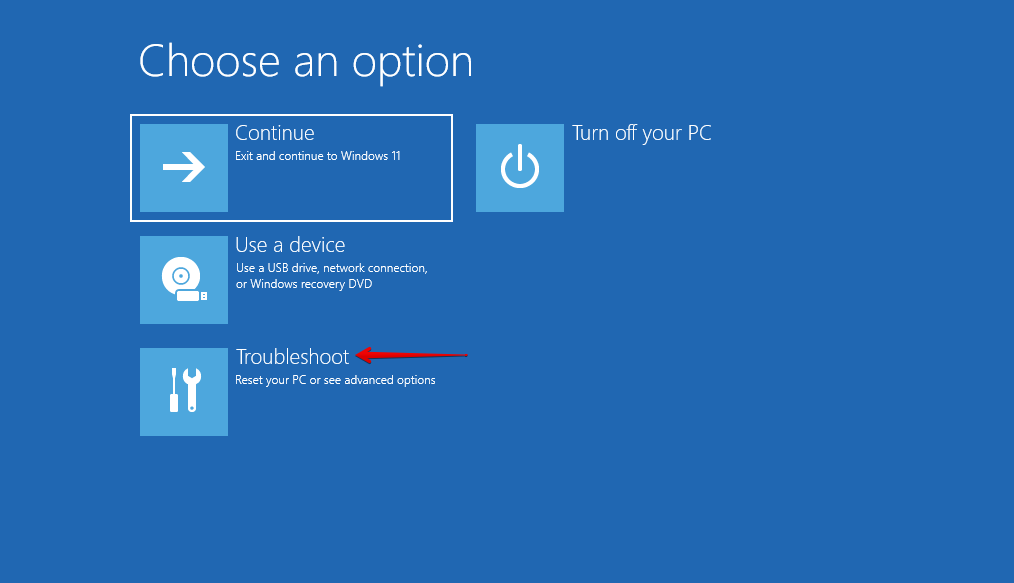
- Click Command Prompt.
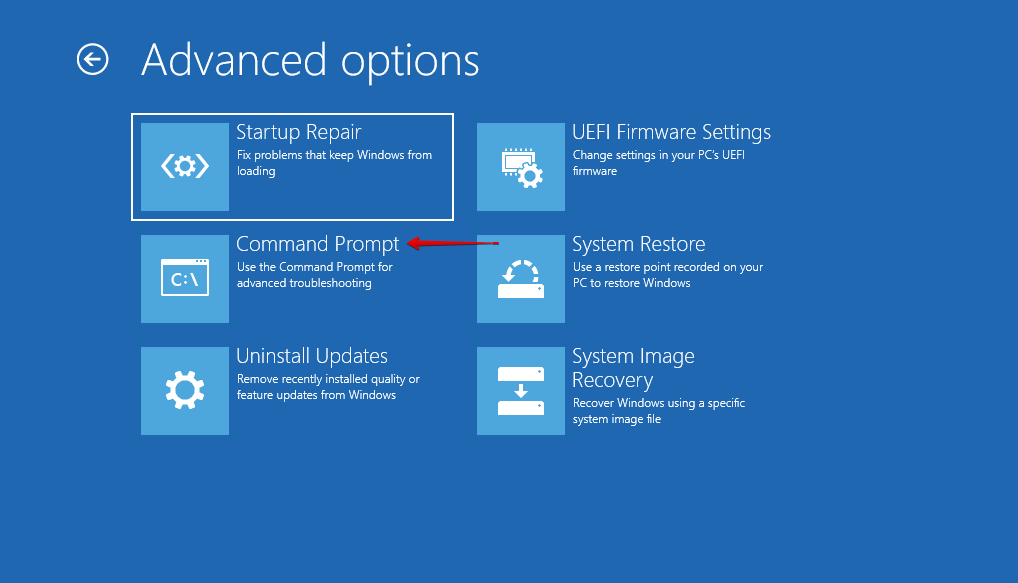
- Type
bootrec /fixmbrand press Enter.
- Exit and click Continue.
Method 3: Initialize HDD
Of course, you can always simply initialize the disk again. Since initializing a disk erases your data, we highly recommend performing a full backup before you do it, as it’s the only way to initialize a disk without losing data.
These steps will guide you through initializing your disk using Disk Management:
- Right-click Start and click Disk Management.
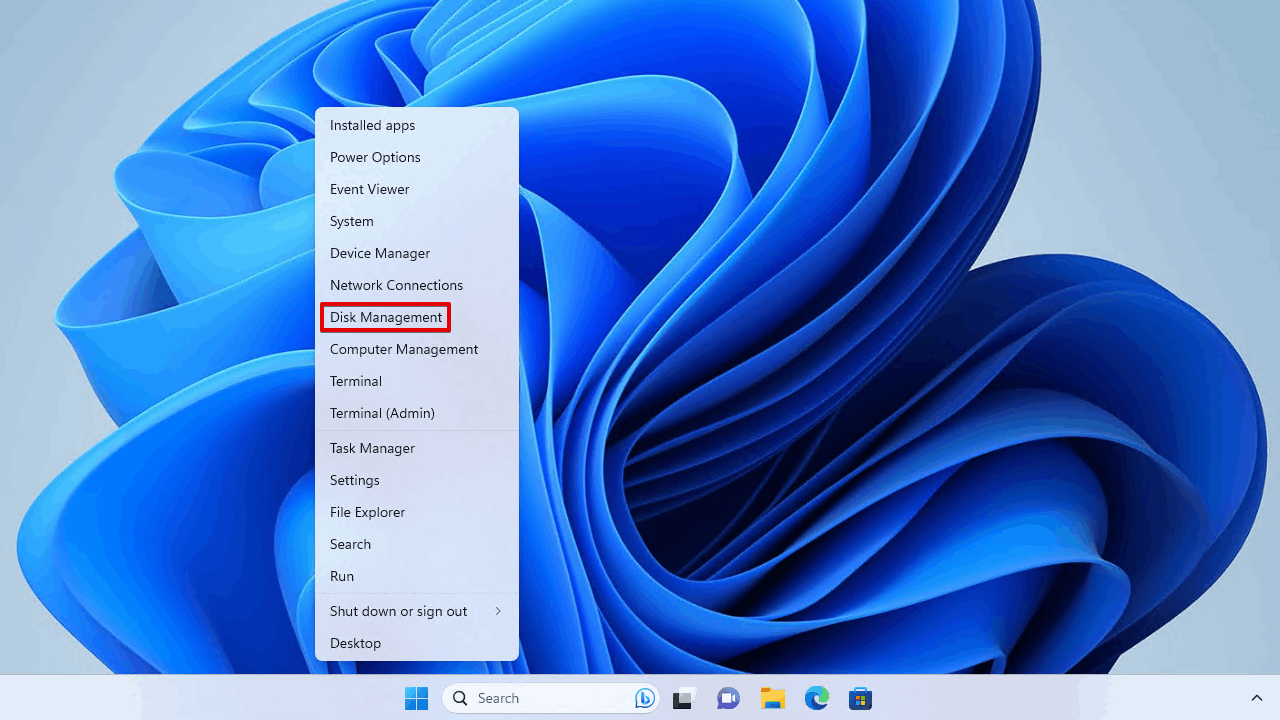
- If you get a pop-up straight away, choose the partition style you want to use and click OK to initialize the disk.
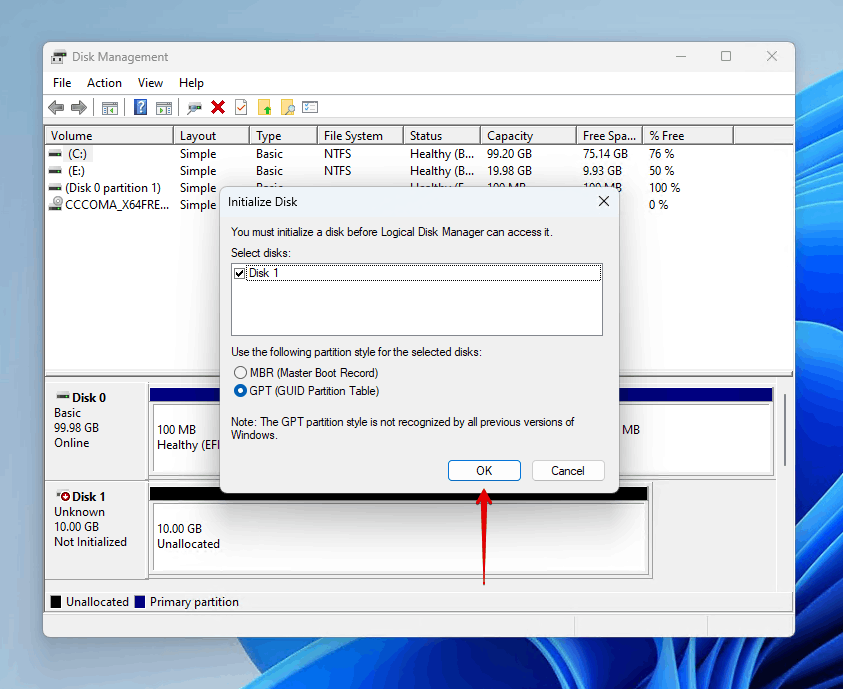
- If you dismissed the pop-up already, simply right-click the disk and click Initialize Disk.
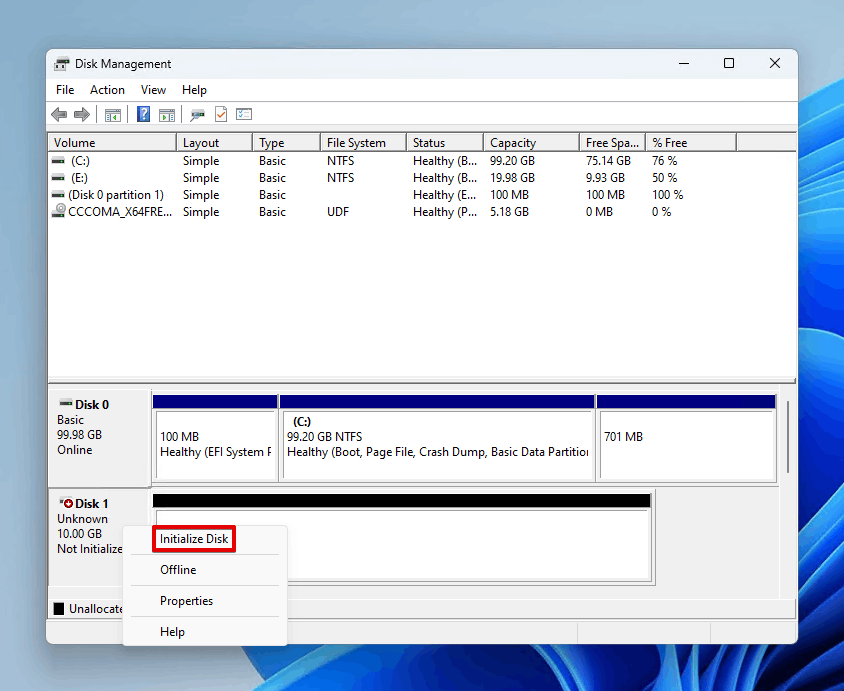
How to Fix Error When Drive is Not Showing in Disk Management
In more severe cases, your drive may no longer be visible in File Explorer or Disk Management. When this happens, it usually points towards an unstable connection, incorrect BIOS settings, or a faulty drive.
Method 1: Check Connections
Make sure the connection between your drive and PC is secure. An unstable connection can cause the ‘disk unknown not initialized’ i/o device error because a consistent connection cannot be maintained.
First, try connecting it to another PC to see if it’s visible. If that doesn’t work, try replacing the cable. Ensure that none of the ports are blocked by dust or lint.
Method 2: Reset BIOS to Defaults
Your disk may not be operating correctly because the BIOS is misconfigured. This solution is a bit more technical, as it involves resetting the CMOS battery that stores your BIOS settings. Bear in mind, while this will clear away any incorrect settings, it will also clear away correct ones. Therefore, make a note of your existing BIOS settings just in case they need to be reconfigured.
Some modern motherboards come with a dedicated button to clear CMOS. If yours does, you can simply use this button instead.
Follow these steps to reset your BIOS:
- Turn your computer off and disconnect the power cable.
- Remove the CMOS battery and wait 10 seconds.
- Reinsert the CMOS battery and boot your computer.
Method 3: Replace the Drive
If none of the aforementioned solutions have worked, the damage may be so severe that it requires an expert’s assistance. In this case, you should replace the drive with one that you know is healthy, and send the problematic hard drive to a data recovery service.
Data recovery professionals are equipped with the tools and know-how to get your data back from a drive that is in a particularly damaged state. But, be aware that while this does yield the best results, it also costs the most.
Conclusion
The ‘Disk 0 Unknown Not Initialized’ error comes about when your drive encounters an error that has caused it to become uninitialized. It can happen to both system disks (Disk 0) and storage disks (Disk 1 and above), often appearing on external drives displaying the message ‘Disk 1 Unknown Not Initialized, Data error (cyclic redundancy check)’.
Before fixing the error, recover your data with a data recovery tool. We like to use Disk Drill. Then, you can update the drivers, fix the MBR (using bootec), or simply initialize the disk to use it again. If the disk isn’t appearing, check the physical connection and reset the BIOS to clear any incorrect settings.
FAQ
- Open Command Prompt (either through WinRE or Start > Terminal (Admin)).
- Type diskpart. Press Enter.
- Type list disk. Press Enter. Make note of the disk number.
- Type select disk *. Replace * with the disk number. Press Enter.
- Type clean. Press Enter.
- Type convert mbr (or gpt). Press Enter.
- Type exit. Press Enter.
- Connect the external hard drive to your computer.
- Open Disk Management.
- Right-click the disk, then click Initialize Disk.
- Choose MBR or GPT, then click OK.

